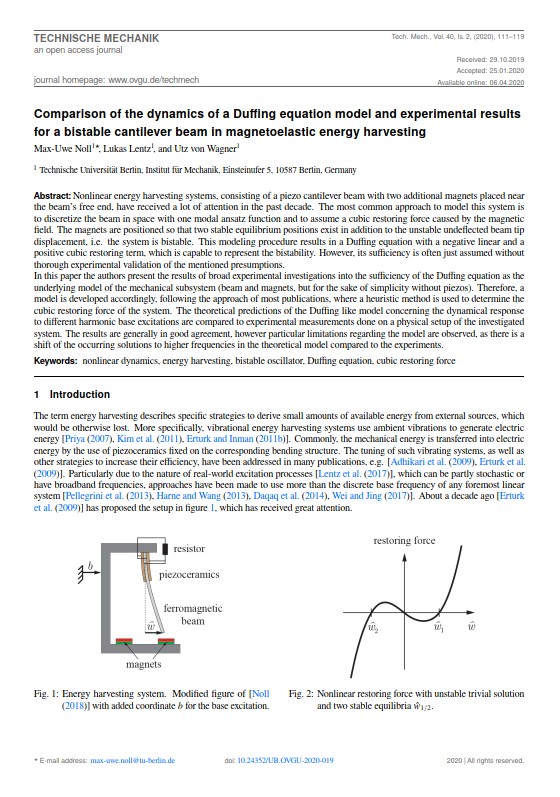Comparison of the dynamics of a Duffing equation model and experimental results for a bistable cantilever beam in magnetoelastic energy harvesting
DOI:
https://doi.org/10.24352/UB.OVGU-2020-019Keywords:
nonlinear dynamics, energy harvesting, bistable oscillator, Duffing equation, cubic restoring forceAbstract
Nonlinear energy harvesting systems, consisting of a piezo cantilever beam with two additional magnets placed near
the beam’s free end, have received a lot of attention in the past decade. The most common approach to model this system is
to discretize the beam in space with one modal ansatz function and to assume a cubic restoring force caused by the magnetic
field. The magnets are positioned so that two stable equilibrium positions exist in addition to the unstable undeflected beam tip
displacement, i.e. the system is bistable. This modeling procedure results in a Duffing equation with a negative linear and a
positive cubic restoring term, which is capable to represent the bistability. However, its sufficiency is often just assumed without
thorough experimental validation of the mentioned presumptions.
In this paper the authors present the results of broad experimental investigations into the sufficiency of the Duffing equation as the
underlying model of the mechanical subsystem (beam and magnets, but for the sake of simplicity without piezos). Therefore, a
model is developed accordingly, following the approach of most publications, where a heuristic method is used to determine the
cubic restoring force of the system. The theoretical predictions of the Duffing like model concerning the dynamical response
to different harmonic base excitations are compared to experimental measurements done on a physical setup of the investigated
system. The results are generally in good agreement, however particular limitations regarding the model are observed, as there is a
shift of the occurring solutions to higher frequencies in the theoretical model compared to the experiments.





